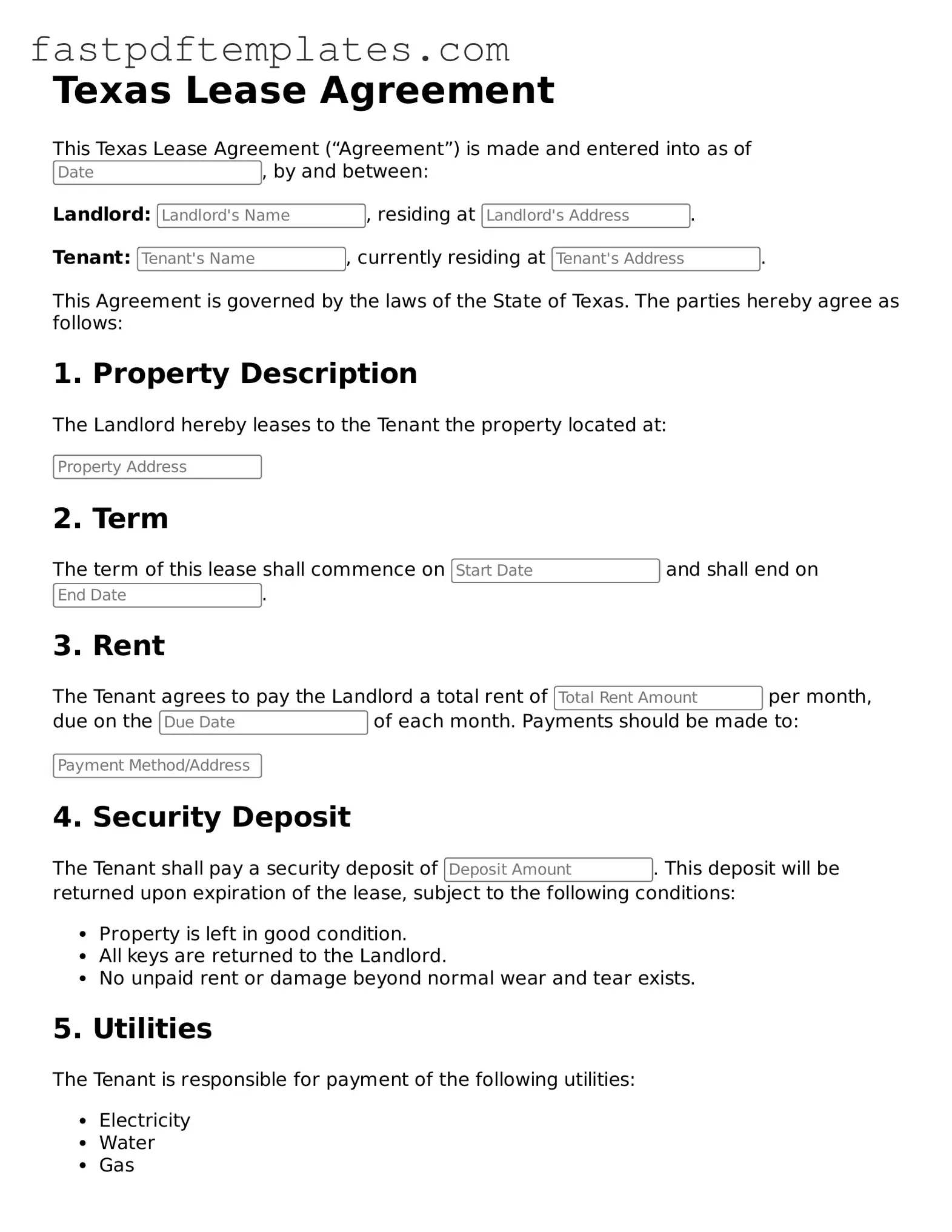Attorney-Approved Texas Lease Agreement Document
The Texas Lease Agreement form is a legally binding document that outlines the terms and conditions between a landlord and tenant for renting residential or commercial property in Texas. This agreement serves as a foundation for the rental relationship, detailing responsibilities, payment terms, and duration of the lease. Understanding this form is essential for both parties to ensure a smooth leasing experience.
Access Document
